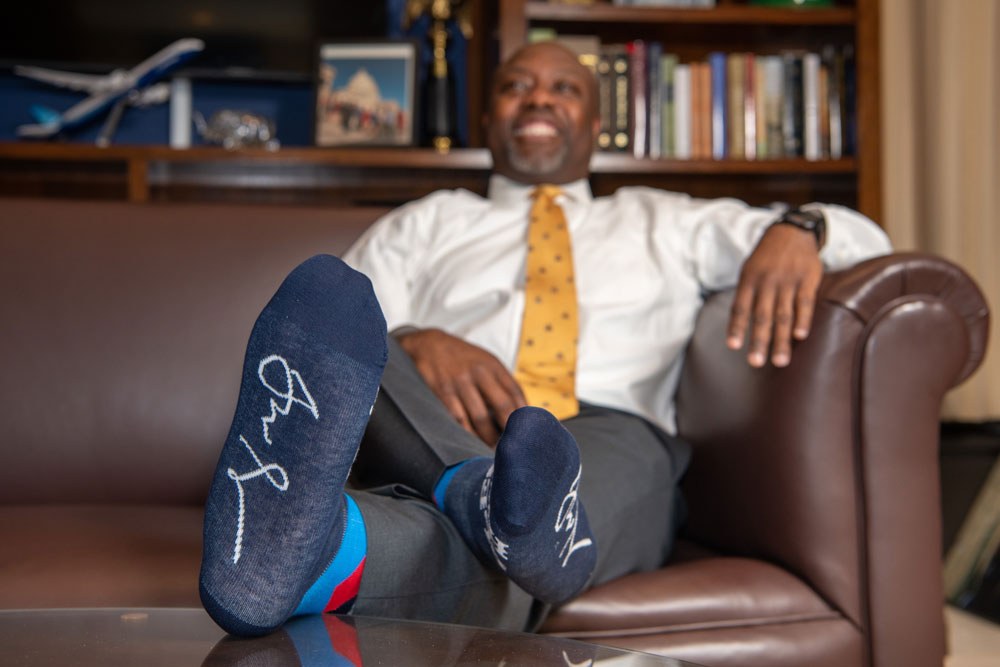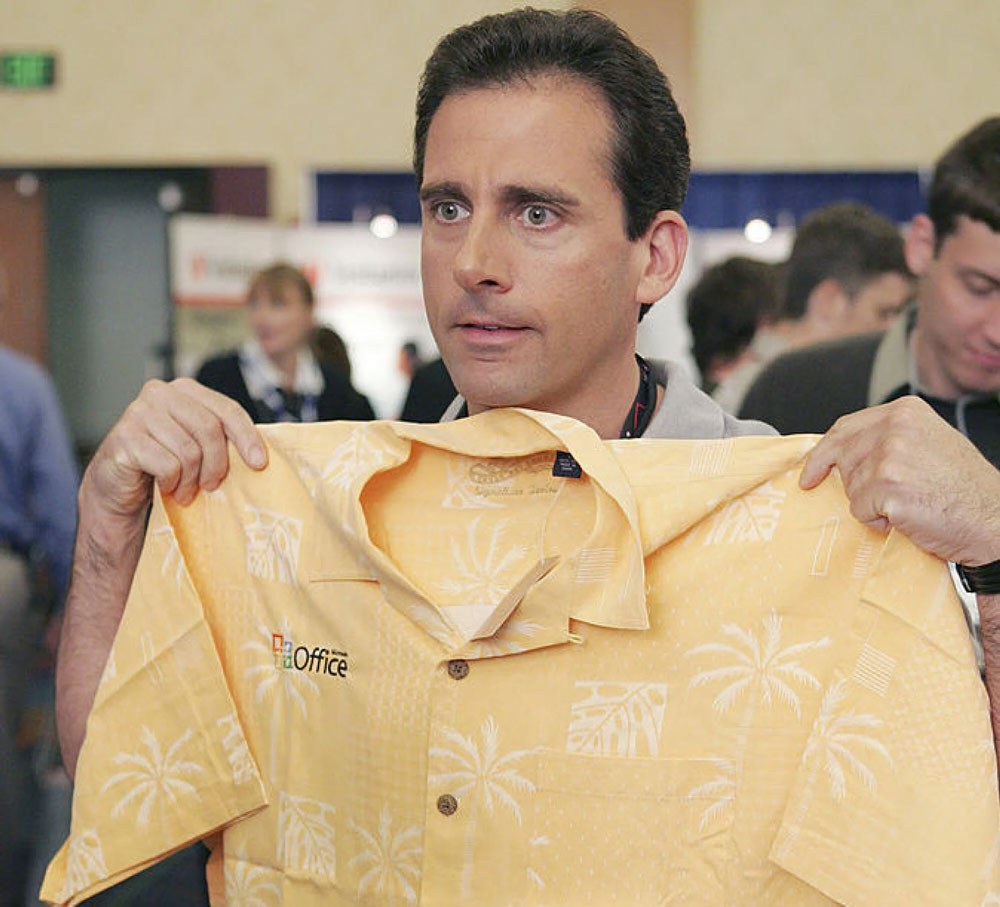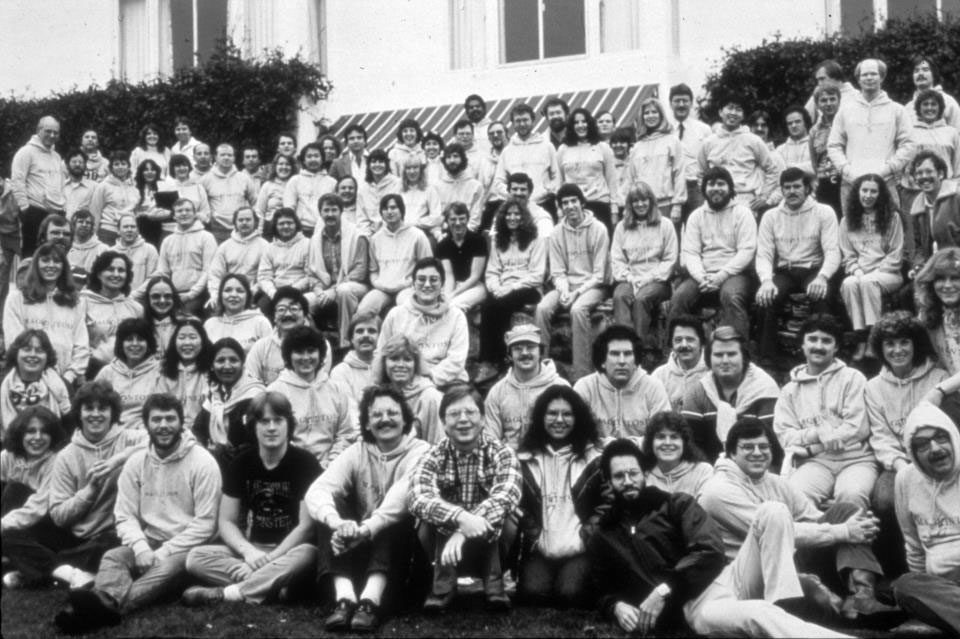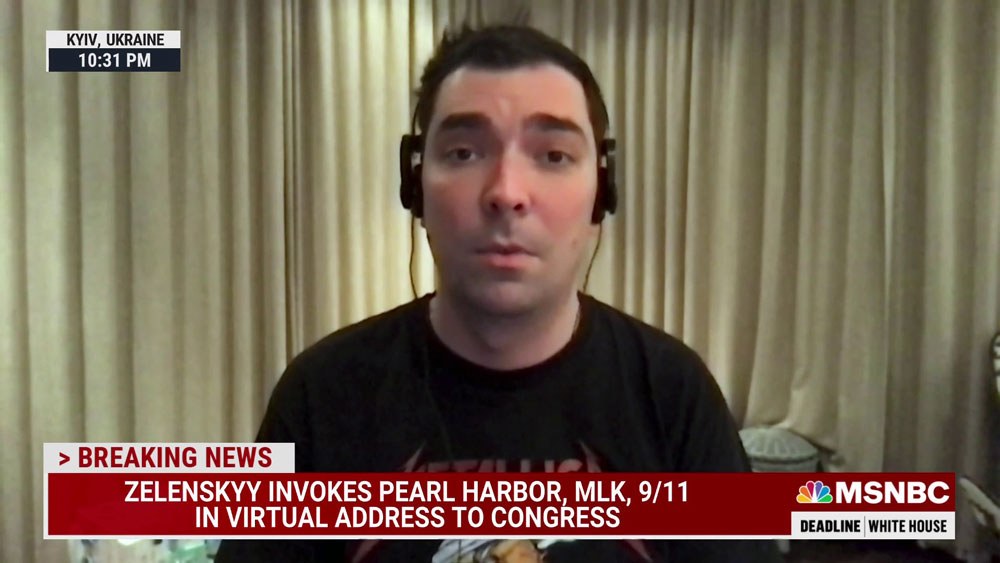Today in Tedium: Does it really matter what types of shoes politicians wear in 2023? Really? Over the last 60 years or so, formal wear has largely started a slow fade out of style as professional environments have gotten less … well, professional. (Admit it, wearing a suit in a WeWork feels kinda weird.) Sure, there are professional settings where these rules still seem to matter, like the halls of power, but even there, rules are starting to bend. Derek Guy, a noted menswear writer who has faced issues with algorithmic oversaturation, raised concerns on Twitter last week about politicians wearing sneakers with suits in Joe Biden’s presence. “This dress sneaker thing is a completely new phenomenon not seen even as recently as the Trump White House,” he wrote. Nothing against Guy, who seems to have views on norms in dress more nuanced and thoughtfully considered than his viral shoe tweet, but I would love to see a more dressed-down world—something I know Guy probably disagrees with. And I have a few thoughts on this topic. Today’s Tedium makes the case for a little less formality. — Ernie @ Tedium
Join over 4 million people who read Morning Brew—the daily email covering the latest news across business, finance, and tech. It’s free & only takes 5 minutes to read so that you can get all of the most relevant updates and move on with your day.
“Forgive me, but, are we talking to each other on the poop deck of a majestic schooner? Is the salty brine stinging my weather-beaten face? No? Then why the &%!@ are you wearing a pair of deck shoes, man?”
— Tom Wambsgans, a character from the TV show Succession, criticizing his cousin-once-removed-by-marriage, Greg Hirsch, for not wearing fancy dress shoes that lived up to the Manhattan high-rise environment in which they worked.

John Fetterman (D-PA), to the distaste of his critics, is paving the way for politicians to dress casually in the halls of power. (governortomwolf/Flickr)
What changed? Why politicians are slowly trending towards more casual dress
I admit that I personally do not aim for high style in my dress. I have enjoyed offbeat tees since my 20s, and while I certainly can dress up when necessary, I still tend towards jeans. I have recently found a comfort zone with V-neck tees, which still offer a neutral presentation for Zoom calls but don’t require collars.
But I tend to work around creative fields, which offer a bit more flexibility in dress. My stance on this topic, when it comes down to it, is similar to my stances on lawn mowing and raking—two things we do to keep up appearances that don’t actually matter in the grand scheme.
I think, in many ways, the reason why the Oval Office is such a target for such criticism of dress comes down to the fact that it is something of a fishbowl. The people who appear within it are photographed constantly, and if they do anything outside of the norm—think Obama in a tan suit—they get called out for it by those looking to score political points.
The first real example of a break in the dress code dam of Washington is probably Trump chief strategist Steve Bannon, whose appearance at the White House drew frequent critique among the beltway crowd. Bannon not only wore loose-fitting khakis, he sometimes rocked multiple collared shirts. Slate put it best when they noted, despite the fact he could definitely afford something tailored, “you get the feeling he wants Trump supporters to think he shops at Sears.”
Other trailblazers on the shifting dress code front include Kyrsten Sinema (I-AZ), who has tended towards busier styles of the type associated with the online retailer ModCloth, and more recently John Fetterman (D-PA), who is literally wearing hoodies and gym shorts to work in violation of Senate rules, just like the average American remote worker. (Fetterman, who is admittedly recovering from a mental health crisis, has found a clever workaround to this rule, voting from the side entrance or Democratic cloakroom of the Senate, then immediately stepping out. He’s working as a politician like Saul Goodman works as a lawyer.)
But for the most part, suits and more formal dress are basically required in Congress—which means that staffers on limited salaries have to adjust accordingly. (No boat shoes.)
But we’re starting to see the dam break in more subtle ways. Beards, which went away for decades in favor of clean-shaven faces, made a comeback in the late 2010s. And we’re starting to see some shifting on shoes.

Sen. Tim Scott (R-SC), who is running for president, has (beyond his politics) drawn attention for his taste in novelty socks. (via his Twitter page)
I think it’s an extension of an existing trend we were already seeing in the halls of Congress—novelty socks. Sen. Tim Scott (R-SC), who just announced his plans for a presidential run, is known for wearing colorful socks, something that a lot of politicians have been doing of late, though Scott appears to have been in front of the trend.
Add in the pandemic, which gave some wiggle room to people used to dressing their Sunday best every day of the week, and now we have brand-name politicians willing to break informal style rules in the name of comfort and simplicity. After all, it’s not like their shoes are going to appear on camera.
To put all this another way, I think we are not very far off from a frontier that is already pretty popular in executive circles—suit jackets with jeans. We’re on a slowly sliding scale, and our style is only going to degrade from there.
1985
The year Phil Collins’ most successful solo album, No Jacket Required, came out. Collins’ album was named after a famous Chicago restaurant, The Pump Room, which once kicked out Collins, already a major rock star at the time, because he wasn’t wearing a jacket. (Making matters worse: He was hanging out with Robert Plant at the time, an even bigger rock star than he was, at least until this album came out.) Dress codes of this nature were common at the time, but have long been a thing of the past in most settings. Decades later, when Studio 54 co-creator Ian Schrager relaunched the restaurant, The Pump Room’s jacket requirement was long gone. (The restaurant itself is now operating under new ownership and a different name.)

Didn’t think I’d find a single image to support the case I made with the subhead below, but here we are. (NBCUniversal)
Our society, in general, is trending towards more casual dress; thank Hawaii and Silicon Valley for that
But, to be clear, the reason why politicians are likely more willing to take some more casual cues with their clothing style is because society in general is doing the same thing.
We saw this in the workplace. Starting in the 1990s, the concept of “business casual” became more common—replacing suits or button-downs with collared golf shirts, for example. This idea is actually rooted in a concept from Hawaii that kicked off in the 1960s called Aloha Friday, an attempt by Hawaii’s fashion industry to encourage the wearing of aloha shirts during the Summer months.
The idea was actively pitched as a way to promote the island, as Bill Foster, the president of the Hawaiian Fashion Guild, told the Honolulu Advertiser upon he campaign’s 1965 launch.
“Island people waring Island attire are a picturesque part of Hawaii,” he said. “Every time we wear the bright and colorful clothes our industry makes, we are not only helping support the industry, we are all contributing to the picture postcard image of Hawaii.”
This was a genius way to sell shirts, because what ended up happening is that it made Aloha shirts popular to wear in the office every day of the week in Hawaii.
What happened in Hawaii is basically a microcosm what happened when the idea was adapted as Casual Friday in other parts of the world, starting in California. Soon, it became common to dress casually basically every day of the week in many fields. In many ways, the office itself adapted to this shift, which is why we saw open offices, controversial as they are, pick up interest in the 2010s. You may love or hate working out of a WeWork, but WeWork in many ways is a reflection of this kind of come-as-you-are mindset to white-collar work.

A company photo of Apple employees, circa 1983, in a sea of hoodies. This was the future of work. (via Mac30th.com)
If you associate WeWork with the tech industry, you won’t be surprised to learn that tech actually led the way with creating more casual office culture. As The Atlantic noted in 2015, Silicon Valley was key to busting through three-piece suit culture once and for all:
What came before business casual? Basically, people wore suits. The norm was starched collars, overcoats, hats, and more hats. Americans dressed up for work, and they also dressed up for restaurants, for travel, for the movies. But as those other venues began to “casualize” by the 1950s, the office (and church) retained a formal dress code, by comparison. Well into the 1970s, companies gave employees manuals to outline official dress policies, but everything depended on the management’s need or desire to enforce them. Little by little, often-ignored infractions eroded the sanctity of any top-down policy: hose-free legs when the weather permitted, a tweed blazer for a day with no client meetings, loafers instead of dress shoes. Cultural change occurs most quickly when it is led by the people, for the people.
And in Silicon Valley in the mid-1980s, the people weren’t interested in adhering to old norms. Businesses there put an emphasis on streamlining management decisions and shortening the lag time between planning and implementation. Tech firms were insular, self-regulated, and male-dominated—a fertile combination for discarding norms and celebrating rule-breaking. Restrictive clothing worn for appearances’ sake was inefficient, and Silicon Valley was all about efficiency. Sport coat? Put it on the back of the chair. Places such as Atari, Apple, and Sun Microsystems embraced the 80-hour workweek, and their clothes proved it. The cover of 1983’s humorous The Official Silicon Valley Guy Handbook showed the world what geek chic looked like: “an unkempt corduroy jacket,” “drab 100% cotton shirt,” and “econo-brand athletic sneakers.”
Over time, this led certain types of clothing, most notably khaki pants, to start to read as more formal than they were once intended. And once khakis had a place in the office, it was only a matter of time before jeans made their way to the workplace.
In many ways, our standard of dress reflects the same type of sliding scale that so many other things do. We live in a society, sure, but society has largely decided, menswear critics aside, that we’re largely OK with T-shirts and more casual outfits at the office.
There are a few outliers, high-stakes boardrooms and political settings being just two. But dress codes that once seemed to matter more than our own output are gradually getting pushed aside, and that even people at the highest levels of power feel compelled to bend the rules suggests that John Fetterman will not be the last Senator wearing a hoodie during a press conference.
YES
The answer to the question, “can your employer regulate the way you dress?” Dress codes remain common in many workplaces, though as I’ve noted above, they have long lost favor in numerous others. The Society of Human Resource Management notes that there are legitimate business cases for it, including creating a certain perception for clients. But as the HR lawyers Ius Laboris note, dress codes can’t limit religious practices or be selectively enforced. And if such rules are discriminatory, they can face legal challenges.

Don’t let the casual dress code fool you: This guy, who appears on American television often, talks about real things in his TV appearances.
The Ukrainian political commentator who is slowly making cable news safe for hipsters
To me, the ultimate example of this shift towards dressing down comes from Igor Novikov, a former adviser to Ukrainian president Volodymyr Zelenskyy. Novikov, still based in Ukraine, has become a frequent talking head on television in recent years, especially on MSNBC.
In another time, just a few years ago, someone of his prominence and role would have appeared on television in a three-piece suit, to ensure he was being taken seriously.
But given that Zelenskyy himself doesn’t have much use for a suit these days, something that people sometimes complain about, it makes sense that Novikov doesn’t either.
And it stands out when he does appear. A month ago, he was rocking an Offspring shirt on-air. Last fall, I caught him on CNN wearing a Meowtallica T-shirt—that’s right, a cat-themed Metallica shirt. When I mentioned this unusual sight on Twitter at the time, he found the mention … and had the perfect retort to anyone who might be critical of this approach.
“Attention society is definitely different from what we’re used to,” he said in a Twitter exchange back then. “But on the other hand, survival of a nation is competing with all the cats of Instagram nowadays.”
In other words, it’s in part a strategy: To get people talking about the real, meaty things he is discussing from his perch, he often wears ironic T-shirts, which are significantly more memorable than whatever tie he might otherwise choose to go with a three-piece suit. In a New Yorker Radio Hour interview last fall, he noted that Ukraine has taken steps to stand out in the West’s “attention economy,” something Zelenskyy, a former comedian is well-suited to do—and wearing a shirt a punk fan might wear plays into that.
Recently, Novikov, who now runs an online store called Cancel Kouture, drew attention for selling shirts that say “Tuckerless,” a reference to Tucker Carlson’s recent firing, as part of a fundraiser.
I think, thanks in part to modern internet culture, we’re going to see more of this.
“Dress codes also allow you to signal that you’re serious about your work. This is not just a matter of pride and professionalism, but also a matter of allowing less-privileged groups to climb up the professional ladder. The people who benefit the most from casual Fridays are those who have already made it.”
— Menswear critic Derek Guy, the guy who started this whole discussion with his comments on politicians’ choice of footwear, offering his thoughts on the decline of dress codes in a 2020 essay. His case for the demise of dress codes being problematic is simply that we have let “chaos” rule in work settings, though he concedes in his piece that there are fair and realistic reasons that they receded from view.
I think the thing that I want to convey about our level of dress, more than anything else, is that it is quite clearly a form of gatekeeping.
We use it to keep out the riff-raff, whether that riff-raff is a jacket-less Phil Collins or Cousin Greg rocking boat shoes miles away from the nearest poop deck. We have different standards for dress for men and women, and nontraditional gender roles get caught in the middle.
And while making room for style, because style does matter for many, we have failed to make room for people to just be themselves.
Creating a standard of dress, as dress codes in schools do for example, can often come across as quite targeted. The U.S. Government Accountability Office released a study last year that found, among other things, that dress codes were targeted towards schools with majority-Black or majority-Hispanic student bodies, and often with tough enforcement policies that removed equity from the process.
This can also be a problem in the workplace. The Society of Human Resource Management notes that lawsuits have emerged over dress codes that lean too hard on gender conformity, for example.
Alaska Airlines lost a regulatory case on this very issue in Washington State last year. The nonbinary employee who publicly raised the issue, Justin Wetherell, explained their stance in an essay for the American Civil Liberties Union: “I look forward to the day when all employees can show up at work and be valued and accepted for their whole selves.”

If we do come back to the office full-time, this is how people are going to dress, more likely than not. And that’s fine. (Jason Goodman/Unsplash)
This takes lots of shapes, but ultimately it comes down to this: What we wear is too often used to regulate our behavior and close doors that should remain open. Do we need standards? Sure; comb your hair, take a shower, wear clean clothes, no actively offensive logos, etc.
Fashion norms exist for a reason. But so do the circumstances that lead society to break those standards. And honestly, there are more of us than there are of them.
Eventually, the people who don’t want to wear a suit will win. And by wearing sneakers in the Oval Office, members of Congress are subtly signaling they don’t want to wear suits anymore.
They are looking at John Fetterman as a style icon.
--
Find this one an interesting read? Share it with a pal!
And thanks again to Morning Brew for sponsoring.





